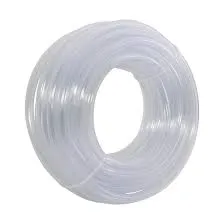Gearr . 15, 2025 10:23 Back to list
cutting hdpe sheets
Navigating the World of Cutting HDPE Sheets A Comprehensive Guide to Mastery
Techniques for Efficient Cutting Once equipped with the right tools, the cutting process involves several techniques to ensure efficient execution 1. Scoring and Snapping For thinner sheets (up to 1/4 inch), scoring and snapping is a quick method. Using a utility knife, score a straight line across the sheet's surface, then apply pressure to snap the sheet along the line. This method is efficient but best suited for straight cuts. 2. Feed Rate and Speed When using machines like CNC routers and table saws, controlling the feed rate and speed is critical. A slower feed rate ensures cleaner cuts while preventing overheating, which can cause the plastic to melt and deform. 3. Cooling Techniques To avoid melting, especially with thicker sheets, consider using cooling agents such as water or air to maintain lower temperatures during the cutting process. This can be achieved through external airflow or specialized cutting fluids. Safety and Maintenance Ensuring Long-Term Success Working with HDPE sheets necessitates adherence to safety guidelines. Protective gear, including safety goggles and gloves, is non-negotiable. The nature of HDPE generates small plastic particles during cutting, which can be hazardous if inhaled. Regular maintenance of cutting tools is essential to extend their lifespan and maintain precision. Blades should be regularly inspected for signs of wear, and sharpening should be done routinely. This ensures that the tools operate at peak performance, providing the best results and reducing the risk of accidents. In Conclusion Becoming proficient in cutting HDPE sheets is a valuable skill for manufacturers and hobbyists alike. By understanding the unique properties of HDPE and selecting the proper tools and techniques, one can achieve precision and efficiency in every cut. This skill not only enhances the quality of the final product but also contributes to cost savings by reducing material wastage. Whether you're crafting intricate designs with a CNC router or making straight cuts with a table saw, the principles of expertise, precision, and safety remain paramount. Embrace these best practices, and you'll turn the challenge of cutting HDPE into a streamlined and successful endeavor.


Techniques for Efficient Cutting Once equipped with the right tools, the cutting process involves several techniques to ensure efficient execution 1. Scoring and Snapping For thinner sheets (up to 1/4 inch), scoring and snapping is a quick method. Using a utility knife, score a straight line across the sheet's surface, then apply pressure to snap the sheet along the line. This method is efficient but best suited for straight cuts. 2. Feed Rate and Speed When using machines like CNC routers and table saws, controlling the feed rate and speed is critical. A slower feed rate ensures cleaner cuts while preventing overheating, which can cause the plastic to melt and deform. 3. Cooling Techniques To avoid melting, especially with thicker sheets, consider using cooling agents such as water or air to maintain lower temperatures during the cutting process. This can be achieved through external airflow or specialized cutting fluids. Safety and Maintenance Ensuring Long-Term Success Working with HDPE sheets necessitates adherence to safety guidelines. Protective gear, including safety goggles and gloves, is non-negotiable. The nature of HDPE generates small plastic particles during cutting, which can be hazardous if inhaled. Regular maintenance of cutting tools is essential to extend their lifespan and maintain precision. Blades should be regularly inspected for signs of wear, and sharpening should be done routinely. This ensures that the tools operate at peak performance, providing the best results and reducing the risk of accidents. In Conclusion Becoming proficient in cutting HDPE sheets is a valuable skill for manufacturers and hobbyists alike. By understanding the unique properties of HDPE and selecting the proper tools and techniques, one can achieve precision and efficiency in every cut. This skill not only enhances the quality of the final product but also contributes to cost savings by reducing material wastage. Whether you're crafting intricate designs with a CNC router or making straight cuts with a table saw, the principles of expertise, precision, and safety remain paramount. Embrace these best practices, and you'll turn the challenge of cutting HDPE into a streamlined and successful endeavor.
Share:
Latest news
-
Durable PVC-M Water Supply Pipes | 60-Year Life
NewsAug.04,2025
-
Premium HDPE Water Supply Pipes: Durable & Leak-Proof
NewsAug.03,2025
-
Premium PVC-M Water Supply Pipe - Durable & Efficient
NewsAug.02,2025
-
Premium PP Welding Rod: GPT-4 Turbo Enhanced
NewsAug.01,2025
-
HDPE Drainage & Irrigation Pipe - Durable, Efficient Solutions
NewsAug.01,2025
-
Premium PVC Transparent Pipe: Durable & Clear Solutions
NewsJul.31,2025

